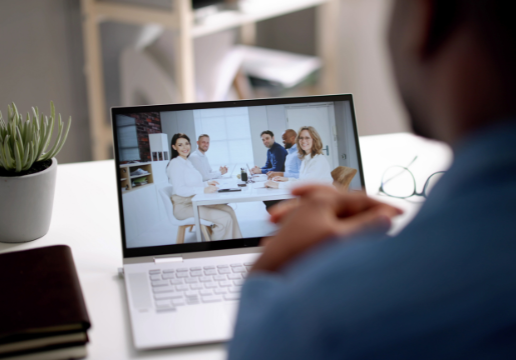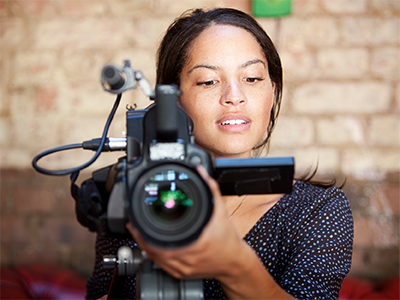Why Lawful Videography Is Crucial for Accurate Court Recordings
The role of lawful videography in court room settings can not be overemphasized, as it offers as a crucial tool for preserving the stability of court records. The effects of integrating lawful videography into typical courtroom methods raise crucial questions about its broader impact on the legal system.
Significance of Visual Proof
In the realm of legal procedures, the value of aesthetic proof can not be overstated. Aesthetic evidence acts as an effective tool in developing facts, substantiating testaments, and enhancing the total clarity of a situation. This kind of proof, which consists of photos, videos, and layouts, can give a tangible context that spoken summaries often lack, therefore offering courts and judges a more clear understanding of the conditions bordering a situation.
Additionally, aesthetic proof help in the retention of info. Human cognition is naturally visual, and individuals are a lot more most likely to keep in mind and understand info presented in a visual format. In the court room, this can be important, as compelling aesthetic proof can sway opinions and strengthen the narrative provided by legal reps.
In addition, the usage of visual evidence can reduce misconceptions and uncertainties that usually occur from spoken exchanges. By supplying a direct representation of events, aesthetic evidence aids to eliminate subjective analyses and cultivates a more unbiased exam of the truths. As a result, the assimilation of visual proof right into lawful proceedings not only strengthens the honesty of the judicial process but additionally boosts the chance of accomplishing a just end result.
Capturing Non-Verbal Signs
Making use of innovative videography techniques can significantly enhance the capture of non-verbal cues during lawful process. Non-verbal communication, including face expressions, body language, and eye call, plays a critical role in communicating feelings and purposes that might not be clearly mentioned in verbal testament. legal videography. Lawful videography uses high-def electronic cameras and critical angles to make certain that these subtle hints are tape-recorded with quality and accuracy
The capacity to evaluate non-verbal behavior can provide useful context to declarations made throughout court sessions. As an example, a witness's hesitation or confidence can be interpreted via their posture or gestures, potentially influencing the jury's assumption of credibility. In addition, using close-up shots can help focus on an audio speaker's expressions, permitting an extra nuanced understanding of the testament.
Additionally, integrating multiple electronic camera angles can create an extensive view of interactions, highlighting characteristics in between celebrations involved. This diverse strategy not just enhances the precision of the court document yet likewise aids in preserving the stability of the judicial process - legal videography. Ultimately, catching non-verbal signs with legal videography fosters a richer, much more full depiction of courtroom process

Enhancing Testimony Dependability
The integrity of reference testament can be substantially reinforced with the usage of high-quality legal videography. Video clip recordings work as an unbiased medium that catches not just the talked words of witnesses but also the nuances of their shipment, including tone, pacing, and emotional expressiveness. This complex paperwork supplies a clearer understanding of the witness's reputation and purposes, which can be crucial in legal procedures.
Additionally, lawful videography lessens the possibility for false impressions that may arise from written records alone. When jurors can observe a witness's attitude and body language in combination with their testimony, they are better geared up to analyze the authenticity and reliability of the evidence presented. This visual context can enhance the testimonial narrative, making it extra engaging and credible.
In addition, the presence of a video clip recording can discourage possible disparities in testimony. Witnesses might be much more careful in their declarations when they know they are being videotaped, causing more accurate and sincere accounts. In general, premium lawful videography boosts the stability of testimony, making sure that the court has accessibility to a complete and honest representation of the facts as shared by the witnesses.
Sustaining Appeals and Reviews
Legal videography plays an essential function in sustaining appeals and reviews by giving a comprehensive aesthetic record of court procedures. This visual documents captures not only the spoken words of witnesses and attorneys but additionally the nuances of body movement, intonation, and court characteristics. Such elements can be pivotal in comprehending the context of testimonies and debates presented.
In the appellate procedure, where the emphasis is on errors of law and procedural justness, a video clip document can act as an important device for appellate courts. It makes it possible for courts to review check out here the original test context, guaranteeing that decisions are based upon a total understanding of the procedures. The capacity to aesthetically evaluate the attitude of witnesses or the interactions between parties can expose insights that created records may overlook.

Furthermore, legal videography can help in making clear ambiguities in testimonies or procedural judgments, consequently strengthening the basis for an appeal. By using a trusted, unbiased account of what transpired in court, lawful videography not just sustains the honesty of the legal process however also encourages all celebrations involved to make educated decisions concerning their situations.
Simplifying Courtroom Processes
Enhancing courtroom efficiency, legal videography simplifies procedures by providing instant access to visual records of procedures. This modern technology allows courts, attorneys, and juries to revisit vital testimony and proof, ensuring that all events have a clear understanding of the instance. By catching the moved here nuances of verbal and non-verbal interaction, videography enriches the record, making it simpler to comprehend the context and weight of testaments.

Additionally, video clip recordings can promote remote involvement in hearings, enabling greater flexibility in organizing and engagement, which is especially beneficial in intricate instances including numerous stakeholders.
Final Thought
To conclude, legal videography plays an important role in ensuring accurate court recordings by supplying vital aesthetic evidence that captures both verbal and non-verbal interaction. This method enhances the dependability of testimonies, supports appellate reviews, and streamlines court room procedures. By cultivating a thorough understanding of court dynamics, legal videography eventually adds to more fair judicial outcomes, enhancing the integrity of the lawful system and promoting educated decision-making.